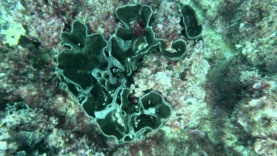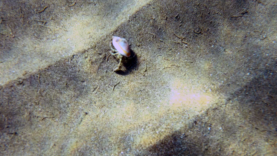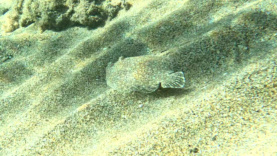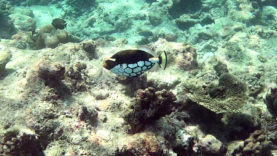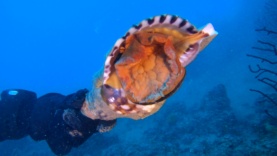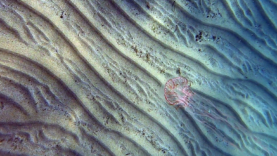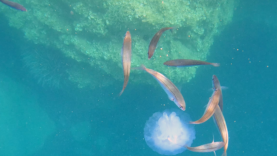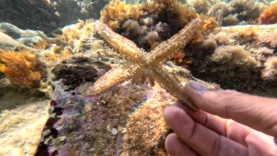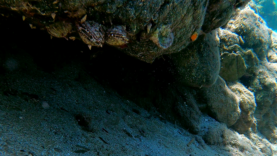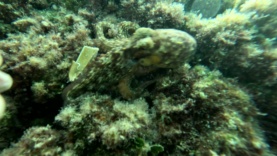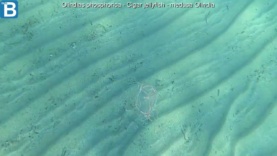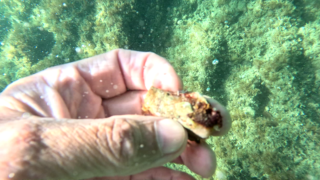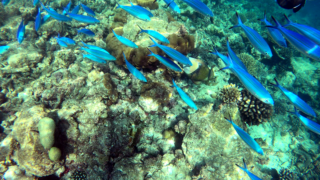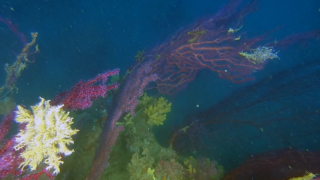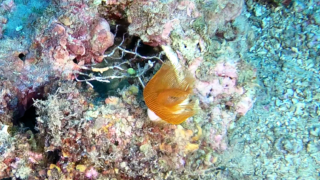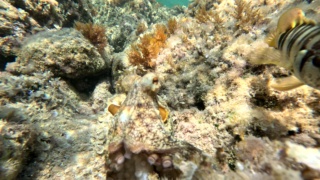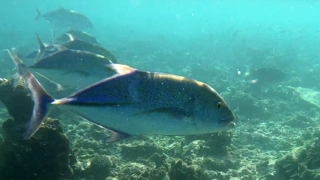Cigar jellyfish Olindias phosphorica
Olindias phosphorica, or Cigar jellyfish, is a species of hydrozoan from the central and eastern Atlantic and the Mediterranean Sea. The Mediterranean sea is a predominantly warm body of water, thus Olindias phosphorica is a warm-water Jellyfish. Global warming has facilitated the proliferation of the species throughout the Mediterranean sea. Members of the genus Olindias have a dome-shaped bell, four radial canals and many centripetal canals. The gonads are beside the radial canals and have characteristic papilliform processes. There are a few primary tentacles growing part way down the bell with adhesive suckers and cnidocytes in bands. There are a pair of statocysts adjoining the base of each primary tentacle. There are a much larger number of short marginal tentacles with rings of cnidocytes for immobilising prey. Between these tentacles there are a number of club-shaped processes which may develop into tentacles. medusa olindia olindias phosphorica
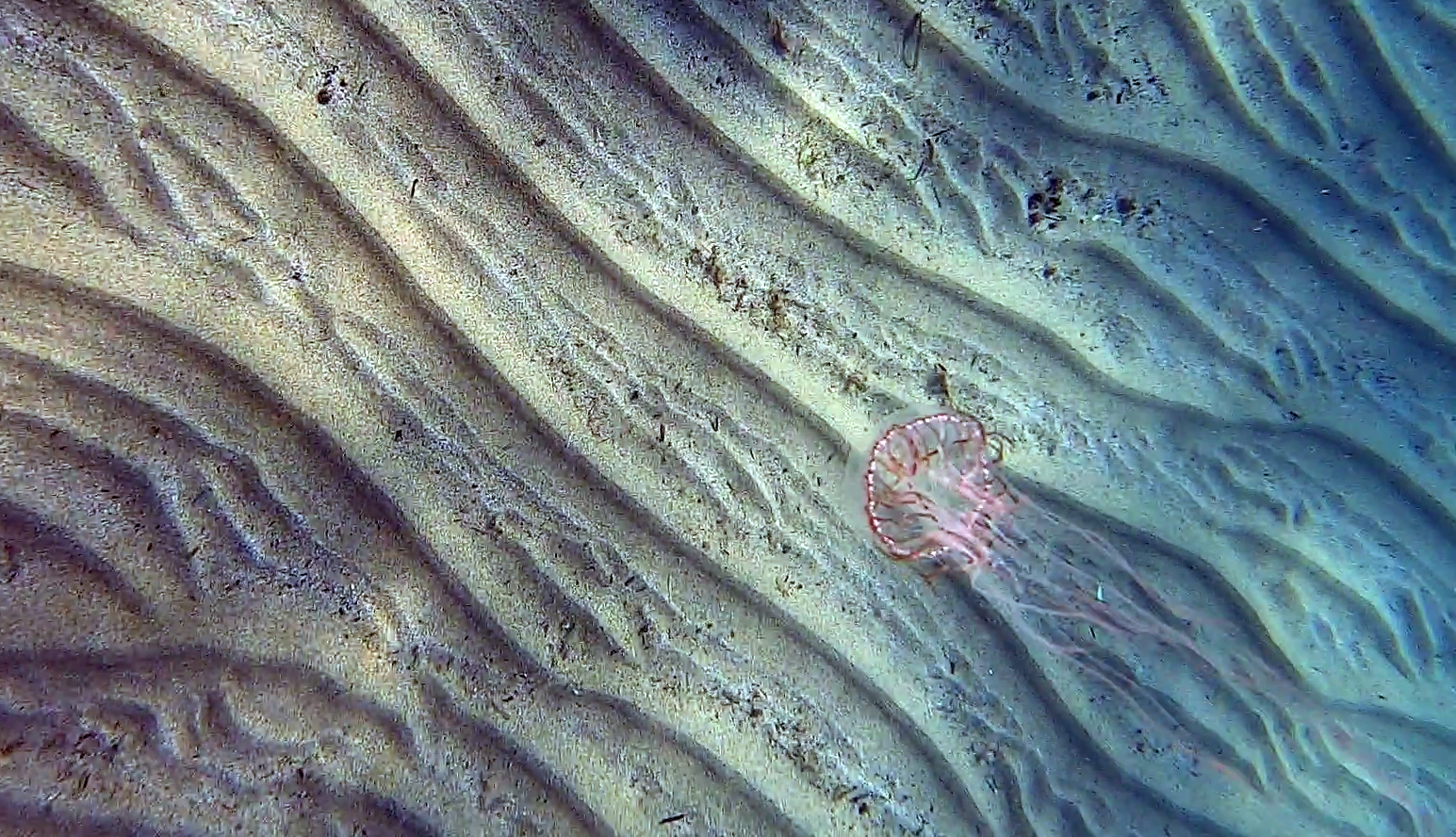
Olindias phosphorica is a species of jellyfish from the central Atlantic, and from the Mediterranean Sea, belongs to the philum of the Cnidarians, to the class of Hydrozoans, to the order of Hydroids, to the group of Hydromeduses and to the suborder of Limnomeduses. Despite appearances, that is, its small size and apparently harmless shape, it has tentacles of different sizes and very stinging. The jellyfish olindia is almost completely transparent and it is almost impossible to see it in the water without the mask. For this reason, together with Pelagia Noctiluca it is one of the most dangerous meuse in the Mediterranean. The jellyfish Olindia is totally translucent in the daytime. At night, when the animal is more easily observable, it has a bioluminescence which gives it a blue-green hue, even the tentacles are bioluminescent. Usually it lives in open water letting itself be carried by currents like all jellyfish, but this jellyfish has a strange behavior: sometimes it drops to the bottom where it remains motionless for some time, becoming practically invisible given its transparency.
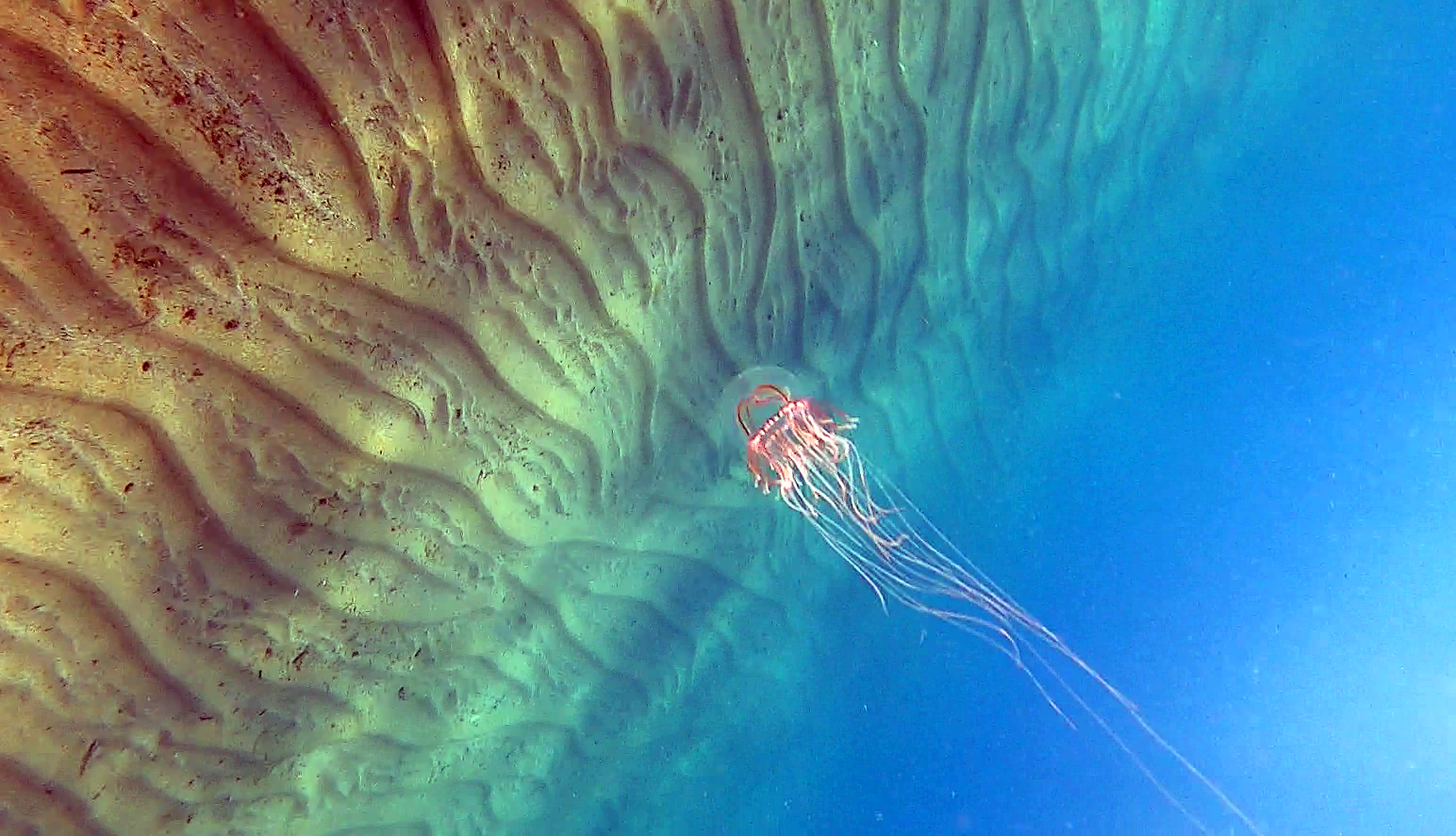
On the edge of the root of the umbrella there are many tentacles. There are two types:
– primary tentacles: each radial canal faces a primary tentacle, which starts tangentially above the edge of the umbrella. Short, smooth and whitish, these tentacles are thickened at the ends in an adhesive button. At the base of each of the primary tentacles, thickened into a red bulb, there is a pair of white staticists. The number of primary tentacles can reach 60.
– the secondary tentacles: in the small depressions located on the edge of the umbrella the secondary tentacles take place. Longer (several times the diameter of the umbrella in full extension) and transparent, these tentacles are full of many batteries of clearly visible cnidocytes (prickly cells); their end is without the adhesive button. The number of secondary tentacles can reach 120.

